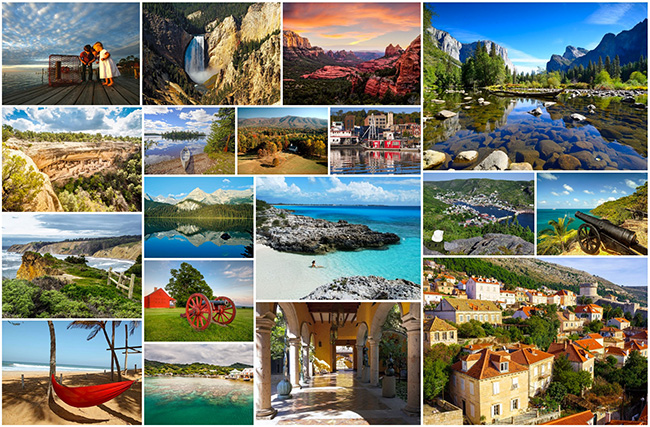Diving into the History of National Geographic
Frank Biasi runs the National Geographic Geotourism MapGuide Program and helps travelers find authentic places through inspriational MapGuides.
Frank directs the development of the geotourism methodology and platform and manages the production of printed and digital MapGuides for destinations around the globe. As a traveler, there’s no surprise that Frank is a part of many Travel Massive chapters around the world including Colorado, Washington DC, Berlin, and our newest Responsible Tourism Networking chapter.
Needless to say, we had a few questions for Frank, check it out.
What is your brand about?
National Geographic believes in the power of science, exploration, education, and storytelling to change the world.
Through the world’s best scientists, photographers, journalists, and filmmakers, National Geographic captivates and entertains a global community through television channels, magazines, children’s media, travel expeditions, books, maps, consumer products, location-based entertainment and experiences.
Founded in 1915 as the Map Department of the National Geographic Society, National Geographic Maps is responsible for illustrating the world around us through the art and science of mapmaking. Our team of cartographers, editors, producers, and salespeople is located in Washington, DC and Evergreen, Colorado.
Is there a unique story of how it came to be?
On the cold, wet night of January 13, 1888, 33 gentlemen gathered in the Cosmos Club near the White House in Washington DC. Among them were trailblazing government scientists and proto-conservationists —men such as John Wesley Powell, Cleveland Abbe, Clarence Dutton, and Henry Gannett. That night they voted to create an organization to “increase and diffuse geographic knowledge.” With limited resources but much passion we diffused knowledge right away with lecture programs and a journal, which became National Geographic Magazine.
What makes your brand awesome or different from other similar ones?
Over the past decade, we’ve developed a methodology based on the principles of ‘geotourism’ that engages tourism stakeholders in destinations to define what’s special about their region while developing content marketing programs to bring high-value, low impact travelers to their destination. The National Geographic brand brings attention to the project from local people and institutions, and willingness to participate in content development and marketing.
What do you think is the biggest challenge in the travel industry you would like to see resolved?
The degradation and loss of natural and cultural resources and the exploitation of local people through unplanned, unsustainable, money-driven tourism development that only benefits wealthy corporations and corrupt individuals.
Is your brand doing something cool and innovative soon?
Last year we redesigned and rebuilt our Geotourism MapGuide web platform and added a cool new itinerary-builder. This year we’re releasing embeddable widgets to publish POI content in third party websites and apps.
What kinds of travel or tech trends should we watch out for in 2-5 years?
Virtual and augmented reality will continue to gain steam in destination marketing and interpretation. Virtual tours and interpretation media will be delivered through new formats and devices, and the production of these experiences will become an increasingly valuable skillset. Geographic and demographic targeting will grow as destination marketers become more saavy to the wealth of relevant data about consumers and how to relate consumer affinities and attributes to their destination.
Where do you see the travel industry in 2-5 years?
Local knowledge, authenticity, sustainability, and fairness will be more widely valued and promoted by travelers, marketers, and local communities leading to better travel experiences and healthier and more interesting destinations. Yes, we’re optimists here at NatGeo…
As a brand, why do you attend Travel Massive events?
I attended my first Travel Massive event at ITB Berlin 2016. It was fun and I made new friends and professional connections. I feel as though I am part of a network that includes many innovative and creative people in the industry. It’s nice to have subcommunities for specific cities and themes and both online and in-person networking opportunities.

Travel Start-Up is a monthly series that profiles unique online travel start-ups in the Travel Massive community around the world. Connect with Frank and National Geographic MapGuides on Travel Massive.
👋 This article is archived. Take a look at our new website.

